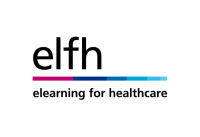Anaesthesia Fundamentals | Physiology | Pulmonary Circulation



Pulmonary Circulation
Session Overview
Description
This session provides an insight into the anatomy, physiology and regulation of pulmonary blood flow and its uneven distribution.
Learning Objectives
By the end of this session you will be able to:
- Compare pulmonary vasculature to systemic circulation
- Describe the effects of gravity on the distribution of blood flow
- Explain the effect of hypoxic vasoconstriction on pulmonary perfusion and the ventilation-perfusion ratio
Knowledge of anatomy is critical to understanding the differences between pulmonary circulation and systemic circulation.
Fig 1a illustrates how the pulmonary circulation is intrinsically related to the lung.
- Recruiting & retaining GPs for your practice
- Posted By HealthcareLink e-Learning
- Posted Date: 2025-03-11
- Location:Online
- This 15mins quick course will give you tips and guides on how to go about recruiting and retaining G...
- Anaesthesia Fundamentals | Physiology | Coronary C...
- Posted By eIntegrity Healthcare e-Learning
- Posted Date: 2025-03-11
- Location:Online
- This session provides an overview of the functional anatomy and physiology of the coronary circulation during the cardiac cycle. It describes the different phases and regulatory mechanisms of coronary blood flow.
- Anaesthesia Fundamentals | Physiology | Peripheral...
- Posted By eIntegrity Healthcare e-Learning
- Posted Date: 2025-03-11
- Location:Online
- This session outlines the physiology of the vasculature, describes the role of the vascular endothelium and the determinants of vascular resistance, explains how the microvascular forces affect exchange of fluids, nutrients and metabolites and describes t
- Anaesthesia Fundamentals | Physiology | Control of...
- Posted By eIntegrity Healthcare e-Learning
- Posted Date: 2025-03-11
- Location:Online
- This session describes the determinants of systemic blood pressure, including physical, neurological, vasomotor and hormonal regulation, and the role of the kidney in blood pressure control.
- Anaesthesia Fundamentals | Physiology | Control of...
- Posted By eIntegrity Healthcare e-Learning
- Posted Date: 2025-03-11
- Location:Online
- This session describes the control of cardiac output.


